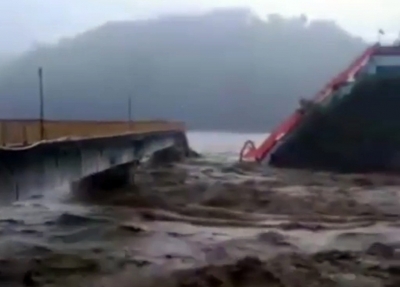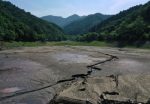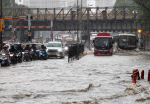
New Delhi:The current spatial and temporal extremes of southwest monsoon have perplexed many, with central and southern peninsular India receiving far excess rains and Indo-Gangetic belt receiving large deficit. But this is not the only year it has happened.
A latest study – based on 120-year data – has found that man-made long-term shifting of land-use and land-cover (LULC) patterns, and most significantly urbanization, play a crucial role in the prediction of the long-term trends of extreme precipitation events, particularly of the intensity of extremes.
“While in certain regions, thermo-dynamical, circulation, and convective instability parameters are also found to be key predicting factors, mostly of the frequency of the precipitation extremes,” said the study, ‘The rise of Indian summer monsoon precipitation extremes and its correlation with long-term changes of climate and anthropogenic factors’, published in Nature.
Researchers Renaud Falga and Chien Wang from Laboratoire d’Aerologie, University of Toulouse III, France, analysed the trends of extreme precipitation events during the Indian summer monsoon measured by two different indicators – threshold-based rainfall extreme indicators, i.e., the frequency and the intensity – for the period 1901-2020, covering entire India in nine regions segregated by a clustering analysis based on rainfall characteristics using the India Meteorological Department (IMD) high-resolution gridded data.
It is no secret that the amount and distribution of precipitation during the Indian summer monsoon (ISM) has a substantial impact on the region’s agricultural systems and thus the livelihood of more than a billion people.
“These climatological parameters have high inter-annual and inter-decadal variabilities. Nevertheless, there is a high probability that man-made global or regional climate changes could have also affected these quantities with an extent yet to be examined. While the overall ISM rainfall is believed to have decreased during the twentieth century, then reversed since the turn of this century, it has been indicated that the extreme precipitation events might have been rising in some parts of India, with hypothesized causes ranging from urbanisation, increase in dew point temperature, to climate variability,” the study said.
Instead of focusing on a few selected locations, the researchers analysed nine regions segregated using a clustering method based on precipitation characters.
“It is found that the majority of India has experienced a statistically significant increase of monsoon precipitation extremes throughout the analyzed 120-year period,” the study pointed out.
The scientists also analysed effective predicting factors behind such an increase using a nonlinear and multivariate machine learning regression, describing anthropogenic activities, climate dynamical and physical processes, and variabilities among other things.
“The results reveal that the man-made land use land cover changes (LULC) appear to be the most critical features in predicting the observed climatological trends of monsoonal precipitation extremes, implying implicitly that these features might have played an important role in causing the discovered rise of monsoonal precipitation extremes particularly of their intensity,” they said.
The study also spoke about which indicators did and which were not found to be correlated to the trends of precipitation extremes than expected. IANS



















